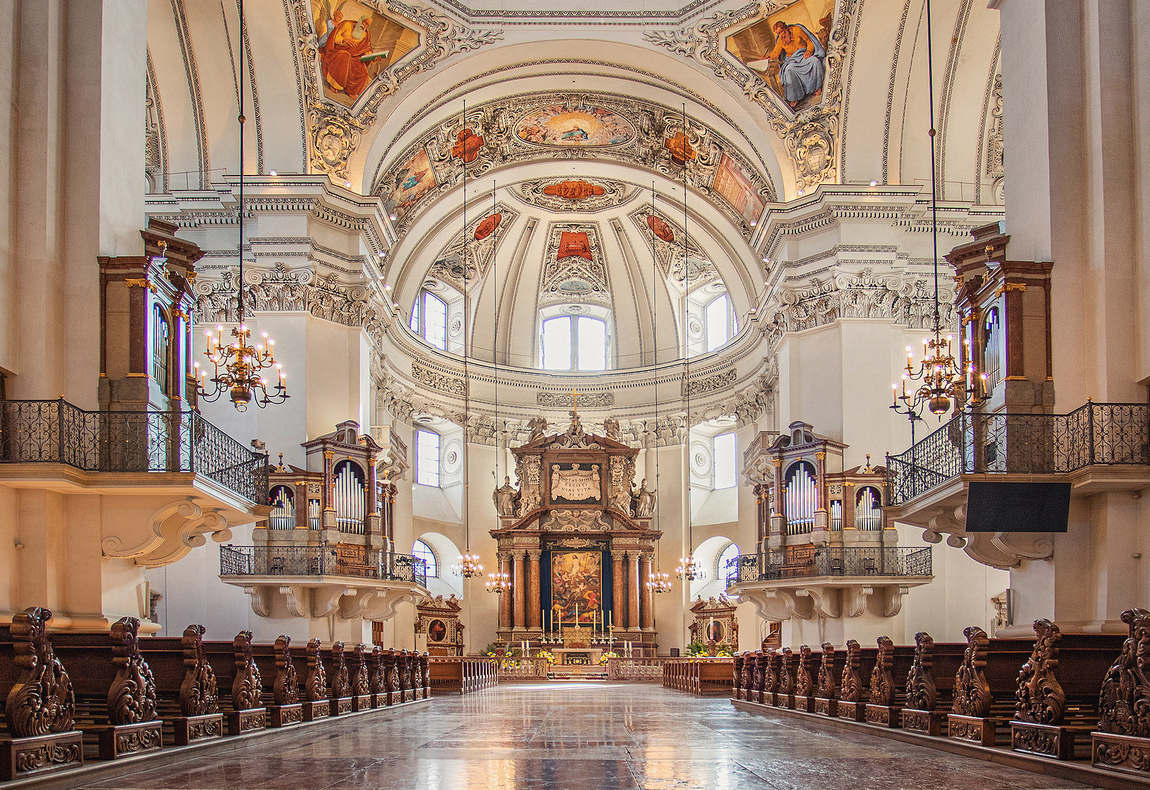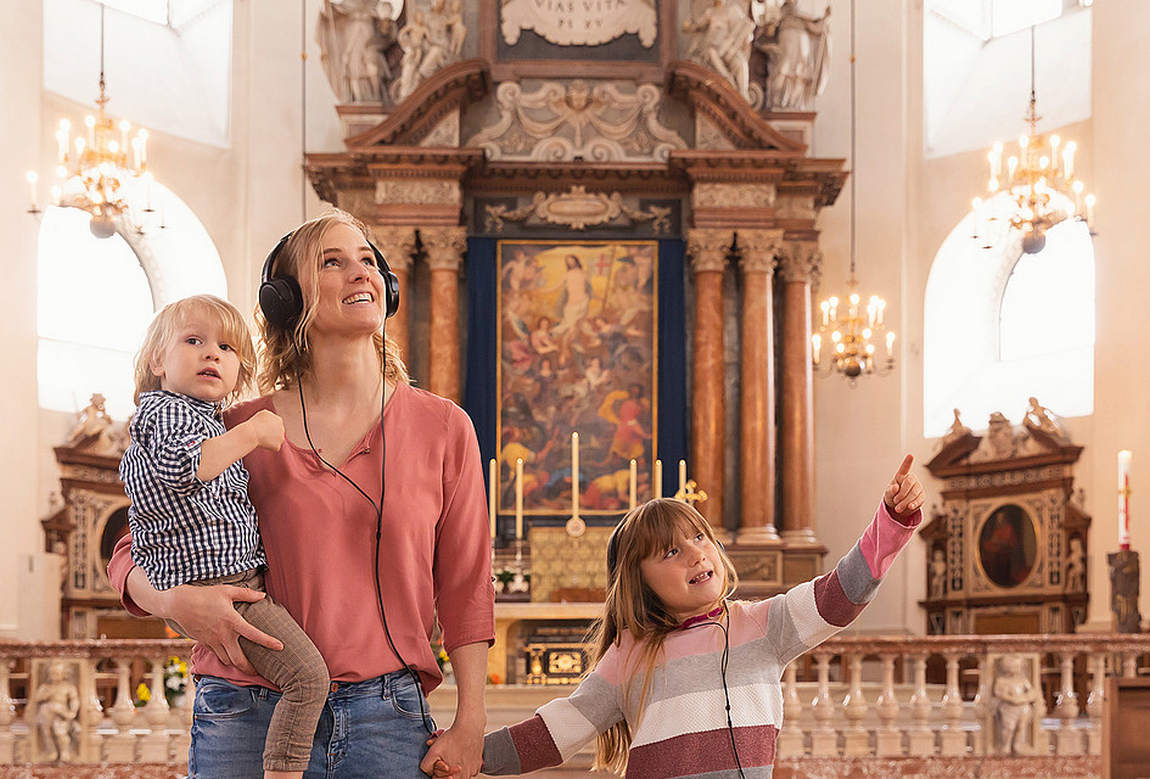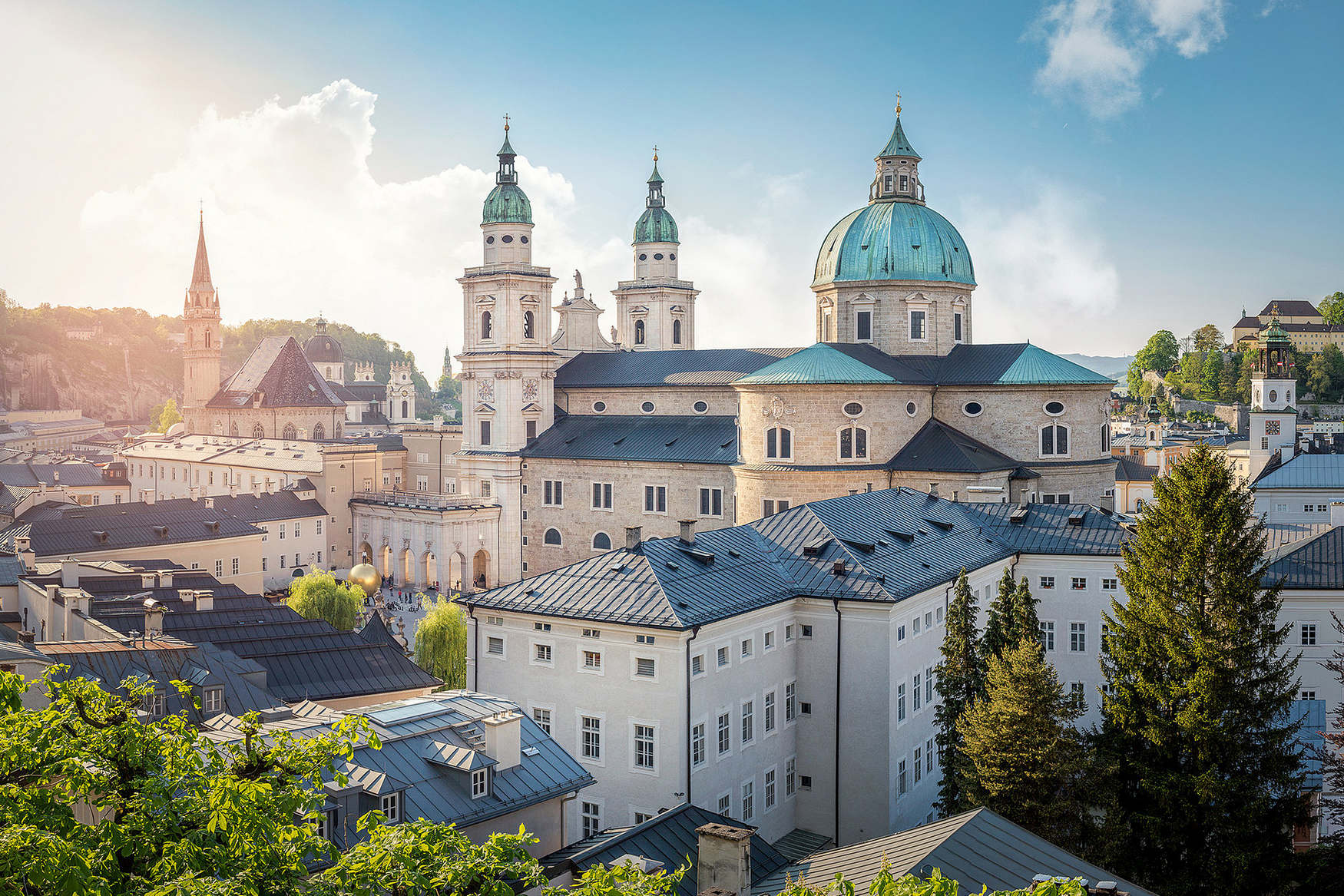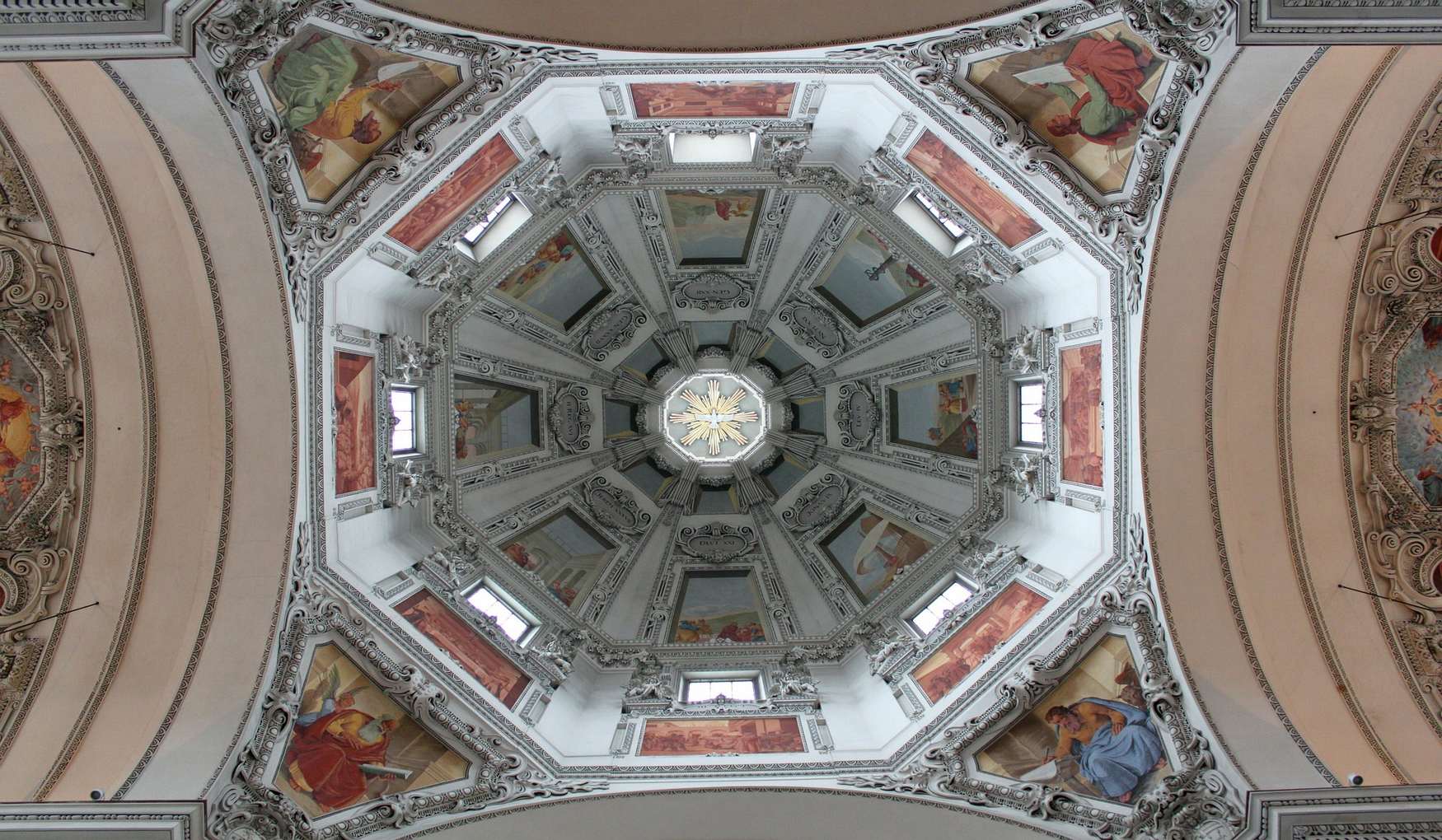Salzburg Cathedral is the city's most beautiful landmark and one of the most famous churches in the world. It has witnessed many historic events, been burnt down many times, suffered bombardments, but has always stood the test of time. The spectacular building with its baroque architecture attracts thousands of tourists. Not many people know that it was here that Mozart himself was baptised!
But Salzburg Cathedral has much more to offer. Take your children to admire the architecture and interior, especially as you can combine your visit with a tour of the city's main square.
The history of the Cathedral

Salzburg Cathedral has a rich, if not very colourful, history dating back to 767. Under Bishop Virgil, a Romanesque church was built on the site of the present one. The ruins of the old foundations can still be seen today. It was consecrated in 774, but in 1167 it burned down along with the town, which was destroyed by the Emperor Barbarossa.
The building was eventually rebuilt, but disaster continued to strike. The temple burned down three more times, but like the phoenix bird, it kept rising from the ashes thanks to the skilful hands of local architects. Unfortunately, it was soon destroyed by another fire, and both the ruins of the building and the surrounding houses were demolished to make way for a completely new structure.
As for the present cathedral, it was rebuilt at the instigation of Archbishop Wolf Dietrich. Like other noblemen of his time, he was wealthy and ostentatious, striving for luxury in every way. He built many monasteries, cathedrals, churches and parks. Wolf Dietrich was the richest of his followers. In fact, it was the Archbishops who owned all the mines in the city, as well as large farms.
The biography of the archbishop is no less interesting than the history of this cathedral. Despite his ecclesiastical status and his inability to have relations with women, Dietrich had a mistress who bore him fifteen heirs and heiresses! He built Mirabel Castle for them, but that's another story.
The Archbishop spent the last years of his life in prison, as the Pope decided that Wolf Dietrich had crossed all acceptable boundaries for a churchman.
But back to the cathedral. The new building was consecrated in 1628, although the work was not yet complete. The final version surpassed all others in beauty and size. Unfortunately, it too was hit by a bomb during the war, destroying the altar and part of the dome. Such misfortune did not deter the faithful, who set about rebuilding it. The subsequent restoration proved to be a success and the last in history. Today, on the grid of the cathedral, you can see a table with three commemorative dates indicating when the cathedral was consecrated: 774, 1628 and 1959.
Interior features
Salzburg Cathedral is in the same style as Domplatz. The two sights seem to complement each other. In the centre of the square is the column of the Mother of God, with a remarkable statue of the Virgin Mary. Behind it is the main door of the cathedral and its magnificent façade. Normally the Baroque style is characterised by extravagant excesses, but inside this cathedral the calm, bright interior with frescoes is surprising. Similar ideas were used in the last reconstruction. This may be the reason why the cathedral is not quite typical, but more modern.

The current cathedral is 45 metres wide, 101 metres long and the highest dome is 79 metres. It can hold 10,000 parishioners! At the entrance there are statues of the saints who are the patron saints of the city. The cathedral is interesting and unique because in the XVIII century Wolfgang Amadeus Mozart himself worked there as an organist for two years.
There is an organ with 4000 pipes decorated with silhouettes of music-making angels - it was Mozart who played it. He even wrote some chorales especially for it. Another important object in the cathedral is also associated with the composer: the bronze baptismal font in which Mozart was baptised in 1756.
An ancient crucifix dating from 1220 can be seen in the church. No less interesting is the tomb of Salzburg's archbishops. And the cathedral has its own museum where you can see the treasures collected by the same archbishops in the XIII-XVIII centuries. The building is in the historic centre of the city, so it's unlikely you'll be able to walk past it without noticing. Don't be lazy, go inside and enjoy the beauty of the interior when you're out for a stroll with your child.











